How to Grow Herbs and Create a Wagon Wheel Herb Garden Design
Herb gardens have existed for centuries to produce both cooking herbs and medicinal herbs for herbal teas and potions. Having a herb garden is one way one can heal oneself very cheaply when you have the odd cough or scratch. Herbs are also ideal to use in homemade cosmetics and soap making recipes.
Most herb gardens are grown in a formal layout with a centerpiece of either a bench where you can sit and enjoy the perfume of the herbs at twilight, or a fountain, sundial, bird bath or the like so that the eye is drawn to the center. Brick or stone paths are laid to keep the mud down when harvesting your herbs, and formal box hedges are usually grown on the outer edges for neatness.
The best time to establish a herb garden is in the spring. This is the time where the plants are experiencing new growth, and it won't be long when the herbs finally establish themselves through the summer and grow vigorously. So therefore, learning how to grow herbs beforehand is a must.
There are 2 types of herbs that you will be planting. Perennial herbs that as plants are often sold in nurseries in pots and will grow for several years before they either need to be divided or be replaced. The other type of herb is short lived, only existing for a season and can be raised from seed. During the winter months it is advisable to mulch your perennial herbs that will offer some protection to the plants from the cold after they die back.
Where and How to Grow Herbs
Herbs are really fairly easy to grow, and will grow virtually anywhere. For those of you looking for formal herb gardens you can see fine examples of these in heritage houses in the UK, France and Italy. Of course, not everyone wants the back-breaking work that goes with maintaining such a herb garden, but you can learn how to grow herbs in a similar way just by growing them in a circle.Herb Garden Design Using a Wagon Wheel
 If you have an old wagon wheel
lying about the farm or homestead they
make the perfect framework for planting herbs where each section of the
spoke can be planted with a different herb. However, even if you don't
have a wagon wheel you can still plant your herbs in a circle.
If you have an old wagon wheel
lying about the farm or homestead they
make the perfect framework for planting herbs where each section of the
spoke can be planted with a different herb. However, even if you don't
have a wagon wheel you can still plant your herbs in a circle.
The center section of the wagon wheel is usually used to grow taller plants such as lemon grass, French lavender or rosemary. In the spaces between the spokes you can plant medium growing herbs such as English lavender, lemon balm, lemon or rose-scented geraniums and marjoram.
Around the outside edge of the beds plant thyme, chamomile, garlic and onion chives and some penny royal that will benefit from the shade of other herbs.
Avoid growing herbs in your herb garden that will be invasive and take over. Lovage and borage are very prolific growers, as is tansy and mint. However, tansy is an ideal herb to grow in an area where nothing else will grow.
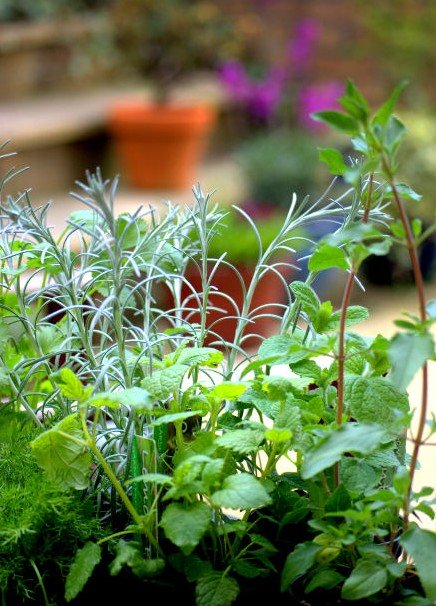
Growing Herbs at Home

How to Grow Herbs - The Best Soil and Ideal Growing Conditions for Growing Herbs
Learning how to grow herbs is simple when you realize that the two most important growing conditions are some sunlight, good soil and a steady supply of water. Other than that, they are not fussy.Herbs don't like wet feet, therefore your soil should be free-draining but it must also have enough nutrients in it for good growth. Sage and thyme are two plants that hate growing in waterlogged areas and will soon turn their toes up and die.
When preparing the best soil for growing herbs make sure that your soil has a good mixture of farmyard manure and a good amount of blood and bone to provide the nutrients your herbs will need.
Break the soil to a depth of 2 feet and add 5 pounds of blood and bone per a circular bed with a diameter of 12 - 15 feet. If you don't have a circular bed then add 4-5 large handfuls of blood and bone per square yard. If you overfeed you will end up with sappy, leggy plants with no flavor, and they will be an open invitation for your garden insects to come and feast to their heart's delight.
Also make sure that your soil has the correct pH balance. Herbs like an alkaline soil where the pH is above 7.0. If your soil is acidic add lime or dolomite.
After you have planted out your herbs add another layer of compost as this will prevent the soil from crusting when it is watered, allowing the surface roots to breathe.
How to Grow Herbs - Pests and Diseases
Luckily, by comparison to growing vegetables and other garden plants, herbs do not suffer from too many pests and diseases.
The main garden pests that attack your growing herbs are grasshoppers; both the large green and speckled brown variety, and they seem to love eating comfrey, catnip and lemon balm. When the weather is humid caterpillars seem to visit to feast on the young leaves of tarragon, salad burnet and marjoram. Slugs and snails also seem to like fresh horseradish leaves. Occasionally, you will also see a few aphids on fennel or dill stems just below the flowers.
Having said that, because of the oils in most herbs, pests tend to stay away and if you look after your herb garden, and have conditioned your soil well, then your pest invasion should be kept to a minimum.
Garlic, chives, tansy, rue, lavender, and santolina are always pest free herbs because of their strong aromatic oils. As a result, these herbs, either individually or together, make a very powerful insecticide. Wormwood and southernwood are also very pungent herbs that are not delicious for pests as the leaves give off a strong smell of ether. If you plant either wormwood or southernwoood outside your back and front door of your house you won't have a fly problem. These are also ideal herbs to grow in your chicken coops as it keeps the lice population down.
How to Grow Herbs and Natural Pesticides
If you only have a small herb garden, then remove the pests by hand. Never spray with any commercial pesticide as you will be using these herbs later in cooking or for cosmetic purposes. However, there are a few natural pesticides that you can use to keep your herbs healthy.Derris dust is a pure organic powder made from the derris root. It kills on contact caterpillars and grasshoppers, but if you mix it with pyrethrum it is more effective. Dust your herbs just before dusk in order to keep the bees safe who will be out in the morning as you don't want to end up killing the bees.
Rhubarb leaves can also be used on your herbs to keep pests away. Cut up 3 pounds of the leaves and boil in 3 quarts of water for 30 minutes. Strain and add 4 ounces of a soft soap. Dishwashing liquid is fine for this as all you want it for is to use it as a sticking agent. This spray can also be used on aphids when growing roses. If you use the rhubarb spray don't harvest the herbs for at least 2 weeks.
Tobacco dust off the floors of tobacco drying sheds, or breaking up cigarettes to extract the tobacco work as well. Boil 4 ounces of tobacco dust or contents of the cigarettes (without the filter) in a gallon of water for 30 minutes. Strain the clear brown liquid, and bottle it carefully labeled and keep away from small children. Spray your herbs but leave the herbs for 3 weeks before harvesting, as this is quite poisonous.
See our page on natural pesticides for more information.
How to Grow Herbs and Fungal Diseases
Herbs seldom suffer from fungal diseases if the soil is well drained, adequately limed or dolomited and full or organic matter. Many types of micro-organisms found in organic compost kill off mildew and fungus-producing spores that normally live in poor soil. Using dolomite in the soil helps not only to feed the herbs but also works to protect the herbs against fungal disease and root-rot.If you find that your herbs do have a touch of fungal disease you will need to act quickly.
Here is an effective homemade fungal spray:
Boil 1 part dried horsetail leaves to 50 parts water for 15 - 20 minutes. Do not make the brew any stronger as this is a potent herb. Cool and water the soil around the base of affected herb plants that has been well watered the day before.What Herbs should you Grow in Your Herb Garden?
After people learn how to grow herbs the most common question asked after that is what herbs should go into a herb garden. But it really comes down to a matter of taste and why you are planting out a herb garden in the first place. Is it a mixed-use herb garden for herbal remedies and for cooking, or is it just for cooking, or just for herbal teas and herbal remedies.Herbs for Cooking
My 5 Best Cooking Herbs
1) Having a bay tree in your garden not only makes a great hedge plant, but it is also great to use the leaves to flavor dishes. Just remember to remove the bay leaves before serving as they go brittle and break up in the food. You can also grow bay trees very successfully in containers.2) The second best cooking herb is basil. I have my basil growing both in the garden and on my kitchen counter in winter. It is a summer-growing annual but by growing it inside in the winter months you are guaranteed of having basil all year round.
3) Then there rosemary. It is such a hardy herb and I am constantly cutting from it for roast potatoes, roast pumpkin and also essential for your roast lamb where I make pockets into the meat and add 2 inch pieces of rosemary with slices of garlic. Rosemary also makes a great low hedge.
4) Parsely is another good culinary herb that we use all the time. There is the Italian flat parsley, which is packed with flavor, and then there is the curly parsley. I use both, although I prefer the Italian parsley. Legend says that you have to be wicked to be able to grow parsley successfully. Well, I never have much trouble, so I guess that says a lot!
5) Finally, I love mint. There are so many varieties, but they all love a cool, moist spot in the garden. Once it is established and happy it will spread everywhere, so plant with care.
These are my favorite culinary herbs, but planting herbs for cooking depends on what you like eating. There is no point in planting a herb if no one in the family will eat it.
If you like eating salads then you will want to plant herbs such as chicory, dandelion, parsley and chives.
If you cook a lot of Italian dishes then you will want to plant fennel, basil and Italian flat-leafed parsley.
If you like making iced-tea and fruit cocktails then mint is a must.
And finally if you like to cook stews and casseroles then herbs such as sage, thyme, marjoram, dill, chervil and winter savory would be best.
Here's a Hint:
It is not just Basil that will do well indoors during the colder months. Parsley, chives, thyme and marjoram call all be dug out of your garden in autumn and placed in pots to line your kitchen window sills.
Herbs for Medicinal Purposes
For those of you who are growing herbs for herbal remedies and herbal
teas then plant peppermint and spearmint, comfrey, chamomile,
valerian
and lemon grass. Lemon balm, comfrey, horehound, horseradish, hyssop,
rosemary, sage, thyme and yarrow are staple herbs for medicinal
purposes.Drying Herbs from the Herb Garden
Drying herbs is the best way to preserve herbs. For best results the herbs should be picked in the early morning after the morning dew has dried, and mid-summer is the best time just before the herbs start to flower. Take either sprigs of herbs or the top 15 cm as this is where the concentration of flavor, perfume or medicinal value will be.Tie the sprigs together and then hang them upside down in an airy room that doesn't get direct sunlight. Make sure that there is enough air circulating the room and in between the herbs themselves.
An alternative method of drying herbs is to remove the leaves from the plants and place them on some newspaper or cheesecloth to dry out. Leave the leaves until they are thoroughly dry and crumble easily. You will need dry air to dry herbs successfully in this way.
If you live in a tropical climate where you have high humidity, then it is better to dry your herbs in a slow oven. Place herbs in an oven at 65ºC for a few minutes leaving the oven door open.
Dried herbs can be stored in airtight containers. After a few days check the containers to see if there is still some moisture evident through transpiration. If there is, remove the herbs immediately and dry them out for a couple of days more, or return to the oven for another couple of minutes.
Some herbs are not successful for drying as they loose their flavour when dried. These herbs are better preserved by freezing rather than drying. Herbs that fall into this category are parsley, basil, dill, chives and mint. Wash and place in plastic bags and freeze immediately.
So know you know how to grow herbs there is no excuse to start a small herb garden where you can enjoy using them in a variety of ways.
Book and Accessories for Growing and Cooking with Herbs
Click on each picture for prices and details.You can add your own Ideas on How to Grow Herbs Here!
We have lots of pages where you can contribute to throughout this homesteading website. We love hearing from our readers, and hope you will be one of those we hear from too. Look around our homesteading website. If you have any tips, advice or additional information that you would like to share on how to grow herbs, please send it in! All you need to do is type and we will do the rest.
Leave a Comment
Do you have anything that you would like to add after reading this page? We would love to hear your thoughts. If you can add additional information to what has been written here you will be adding value to the website! No need to have any special skills - just type and submit. We will do the rest!
Did you find this page helpful?
Sharing is a way of saying, "Thanks!"




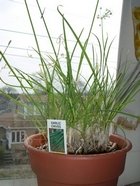
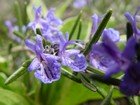
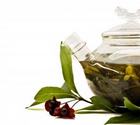
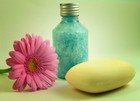
New! Comments
Do you have something of value to add? Leave me a comment in the box below.